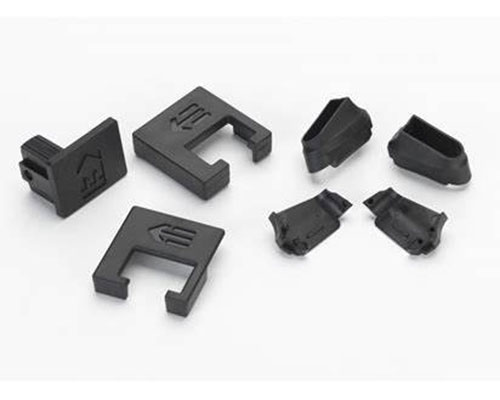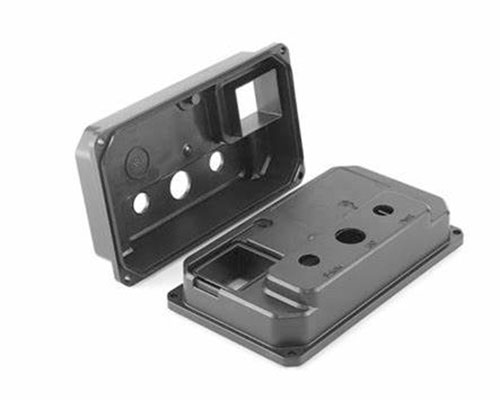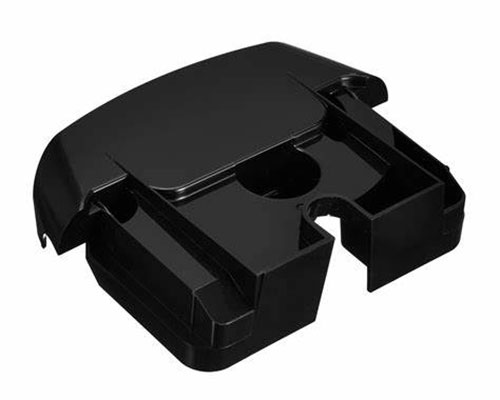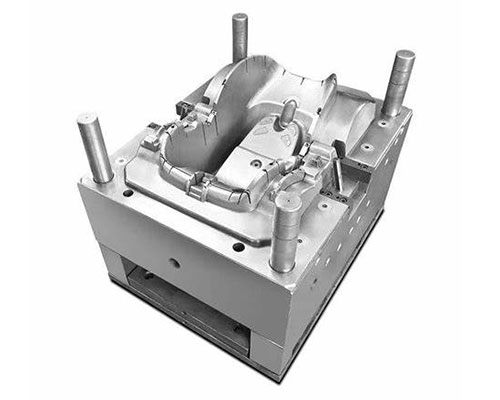Prototyping and Manufacturing Application in Packaging parts Industries
Fast-Track Packaging Innovation with Yigu’s Prototyping & Mass Production: Transform your packaging process with Yigu Technology’s end-to-end manufacturing solutions—from rapid prototypes to high-volume production.
✅ Speed to Market: Accelerate development with 3D printing and rapid tooling.
✅ Cost-Effective Scaling: Seamlessly transition from prototypes to mass production.
✅ Material Versatility: Choose from plastics, biopolymers, and custom composites.
✅ Precision & Consistency: Advanced CNC and injection molding for flawless output.
✅ Sustainability Focus: Eco-friendly materials and waste-reducing processes.
Ideal for custom packaging, luxury boxes, and industrial containers.
1. Introduction to Rapid Prototyping and Mass Production in Packaging
1.1 Definition of Rapid Prototyping
Rapid prototyping is a group of techniques used to quickly fabricate a scale model of a physical part or assembly using three-dimensional computer-aided design (CAD) data. In the packaging industry, it allows designers and engineers to create physical prototypes of packaging parts quickly and cost-effectively. This process typically involves additive manufacturing technologies such as 3D printing. For example, a company can design a new package on a computer, send the design to a 3D printer, and have a physical prototype within hours. This enables quick iterations and testing of different designs before committing to mass production.
1.2 Overview of Mass Production Manufacturing
Mass production in the packaging industry involves the large-scale manufacturing of packaging materials and components. Traditional methods include injection molding, blow molding, and thermoforming. These processes are highly efficient for producing large quantities of identical packaging parts. For instance, a beverage company might use injection molding to produce millions of plastic bottle caps per day. The key advantages of mass production are low cost per unit and high consistency in product quality. However, it requires significant investment in tooling and machinery, and any design changes can be costly and time-consuming. Rapid prototyping can help bridge the gap between design and mass production by ensuring that the final design is optimized before large-scale manufacturing begins.
2. Applications of Rapid Prototyping in Packaging
2.1 Design Iteration and Testing
Rapid prototyping has revolutionized the design process in the packaging industry by enabling quick and cost-effective iterations. Traditionally, creating a new packaging design involved multiple stages of physical prototyping, which were both time-consuming and expensive. With rapid prototyping, designers can now produce multiple versions of a packaging part within a single day. For example, a food packaging company can create different structural designs for a new snack container, test their functionality and aesthetics, and make adjustments based on feedback. This iterative process significantly reduces the time to market. According to a study by the Packaging Industry Research Association, companies using rapid prototyping for design iterations can reduce their product development cycle by up to 40%. Additionally, rapid prototyping allows for more thorough testing of packaging designs. Physical prototypes can be subjected to various tests, such as drop tests, compression tests, and leak tests, to ensure that the final product will meet the required standards. This helps in identifying potential design flaws early in the process, saving both time and resources.
2.2 Customization and Personalization
The packaging industry is increasingly moving towards customization and personalization to meet the diverse needs of consumers. Rapid prototyping plays a crucial role in this trend by enabling the creation of unique packaging designs tailored to specific customer requirements. For instance, a luxury cosmetics brand can use rapid prototyping to produce custom packaging for a limited-edition product line. This not only enhances the brand's image but also provides a unique customer experience. According to a survey conducted by the Custom Packaging Network, 70% of consumers are more likely to purchase products with customized packaging. Rapid prototyping also supports the trend of personalization in packaging. With the help of 3D printing, individual customer names, logos, or designs can be incorporated into packaging parts. This level of personalization is particularly effective in the e-commerce sector, where personalized packaging can enhance customer loyalty and satisfaction. For example, an online gift company can use rapid prototyping to create custom packaging for each order, making the product stand out and providing a memorable unboxing experience for the customer.
3. Mass Production Techniques in Packaging
3.1 Injection Molding
Injection molding is a widely used mass production technique in the packaging industry, particularly for producing rigid plastic packaging components such as bottle caps, containers, and closures. The process involves injecting molten plastic material into a mold cavity, where it cools and solidifies into the desired shape. This method offers several advantages for packaging applications. Firstly, it allows for high precision and consistency in the production of complex shapes and intricate details. For example, a beverage company can produce millions of identical bottle caps with tight tolerances to ensure a perfect seal. Secondly, injection molding has a high production rate, making it suitable for large-scale manufacturing. Once the mold is set up, the cycle time for producing each part can be as short as a few seconds. According to a report by the Plastics Industry Association, injection molding can achieve a production rate of up to 1,000 parts per hour for small to medium-sized packaging components. However, the initial cost of creating the mold is relatively high, and any design changes require significant investment in new molds. Despite this, the low cost per unit and high quality of the final product make injection molding a cost-effective choice for mass production in the packaging industry.
3.2 Extrusion and Blow Molding
Extrusion and blow molding are essential techniques for producing flexible and semi-rigid packaging materials, such as plastic bottles, films, and tubes. Extrusion involves pushing molten plastic through a die to form a continuous profile, which is then cooled and solidified. In the case of blow molding, the extruded plastic is then inflated into a mold to create hollow shapes. This combination of processes is highly efficient for manufacturing lightweight and flexible packaging. For example, a dairy company can use extrusion and blow molding to produce plastic milk bottles that are both lightweight and durable. The advantages of these techniques include low material waste, as the plastic is used efficiently in the extrusion process, and the ability to produce large quantities of uniform products. According to industry data, extrusion and blow molding can achieve a production rate of up to 500 bottles per minute for small to medium-sized containers. Additionally, these methods allow for the incorporation of multiple layers of materials, enhancing properties such as barrier protection and recyclability. For instance, multi-layer films produced through extrusion can provide excellent oxygen and moisture barrier properties, extending the shelf life of packaged products. However, similar to injection molding, the initial setup and tooling costs can be high, and design changes require new molds or dies. Despite these challenges, extrusion and blow molding remain critical techniques for mass production in the packaging industry due to their efficiency and versatility.
4. Case Studies of Packaging Parts
4.1 Case Study 1: Innovative Beverage Packaging
In the beverage industry, rapid prototyping and mass production techniques have been combined to create innovative packaging solutions that enhance both functionality and aesthetics. One notable example is the development of a new type of reusable beverage bottle by a leading beverage company. The company used rapid prototyping to create multiple design iterations of the bottle, focusing on ergonomic design, ease of use, and visual appeal. Through 3D printing, they were able to quickly test different shapes, sizes, and textures, ultimately arriving at a design that was both comfortable to hold and visually striking.
Once the design was finalized, the company turned to mass production techniques to manufacture the bottles on a large scale. Injection molding was chosen for its ability to produce high-quality, consistent parts at a low cost per unit. The company invested in advanced injection molding machinery that allowed for high production rates, with the capacity to produce over 500,000 bottles per day. The final product featured intricate details and a unique shape that stood out on store shelves, contributing to the brand's market success.
The use of rapid prototyping in this case study allowed the company to accelerate the design process, reducing the time to market by approximately 30%. Additionally, the ability to test multiple designs before committing to mass production minimized the risk of design flaws and ensured that the final product met both functional and aesthetic requirements. The combination of rapid prototyping and injection molding enabled the company to bring an innovative and high-quality beverage bottle to the market quickly and efficiently.
4.2 Case Study 2: Sustainable Food Packaging
The food packaging industry is under increasing pressure to develop sustainable solutions that reduce environmental impact while maintaining product safety and quality. One company successfully addressed this challenge by using rapid prototyping and mass production techniques to create a new line of sustainable food packaging. The company focused on developing a biodegradable packaging solution for fresh produce, aiming to replace traditional plastic packaging with a more environmentally friendly alternative.
Rapid prototyping played a crucial role in the development of this new packaging. The company used 3D printing to create prototypes of the biodegradable packaging, allowing them to test different materials and designs. They experimented with various biodegradable materials, such as polylactic acid (PLA) and starch-based compounds, to find the optimal balance between strength, flexibility, and environmental impact. Through iterative testing, they were able to develop a packaging design that effectively protected the produce while being fully biodegradable.
For mass production, the company chose thermoforming as the primary manufacturing technique. Thermoforming involves heating a plastic sheet and forming it into the desired shape using a mold. This technique was selected for its ability to produce lightweight and cost-effective packaging at a high production rate. The company invested in state-of-the-art thermoforming equipment, which enabled them to produce up to 10,000 packaging units per hour. The final packaging design was not only sustainable but also visually appealing, with a clear window to display the fresh produce and a biodegradable label for branding.
The integration of rapid prototyping and mass production techniques in this case study resulted in a significant reduction in the development time for the sustainable packaging solution. The company was able to bring the product to market within six months, compared to the typical 12-18 months for traditional development processes. The new packaging received positive feedback from both consumers and retailers, contributing to the company's reputation as a leader in sustainable packaging. The use of rapid prototyping allowed for thorough testing and optimization of the design, while mass production techniques ensured that the final product could be manufactured efficiently and at scale.
5. Advantages and Challenges
5.1 Benefits of Rapid Prototyping and Mass Production
The combination of rapid prototyping and mass production offers numerous benefits to the packaging industry, driving innovation, efficiency, and competitiveness.
Accelerated Product Development
One of the most significant advantages is the accelerated product development cycle. Rapid prototyping enables designers and engineers to quickly iterate and test packaging designs, reducing the time to market. According to a study by the Packaging Industry Research Association, companies using rapid prototyping for design iterations can reduce their product development cycle by up to 40%. This speed is crucial in a fast-paced industry where time-to-market can be a competitive differentiator.
Cost Efficiency
While the initial investment in rapid prototyping equipment and mass production machinery can be substantial, the long-term cost savings are considerable. Rapid prototyping reduces the need for expensive physical prototypes and minimizes design errors, saving both time and money. Mass production techniques, such as injection molding and extrusion, offer low cost per unit and high consistency in product quality. For example, injection molding can achieve a production rate of up to 1,000 parts per hour for small to medium-sized packaging components, making it a cost-effective choice for large-scale manufacturing.
Enhanced Design Flexibility
Rapid prototyping allows for greater design flexibility and customization. Designers can create complex shapes and intricate details that would be difficult or impossible to achieve with traditional prototyping methods. This flexibility is particularly important in the packaging industry, where unique and eye-catching designs can enhance brand appeal and consumer engagement. For instance, a luxury cosmetics brand can use rapid prototyping to produce custom packaging for a limited-edition product line, providing a unique customer experience.
Improved Product Quality
Mass production techniques ensure high consistency and quality in packaging components. Injection molding, for example, allows for high precision and tight tolerances, ensuring that each part is identical and meets the required standards. This consistency is crucial for maintaining product quality and reliability, especially in applications such as beverage bottle caps or pharmaceutical packaging, where precision is paramount.
Sustainability
The integration of rapid prototyping and mass production also supports the development of sustainable packaging solutions. Rapid prototyping enables the testing of various biodegradable and recyclable materials, allowing companies to find the optimal balance between functionality and environmental impact. Mass production techniques can then be optimized to produce these sustainable packaging solutions efficiently and at scale. For example, thermoforming can be used to produce lightweight and cost-effective biodegradable packaging, contributing to a more sustainable packaging industry.
5.2 Common Challenges and Solutions
Despite the numerous benefits, the integration of rapid prototyping and mass production in the packaging industry also presents several challenges.
High Initial Investment
The initial investment in rapid prototyping equipment and mass production machinery can be a significant barrier for some companies. The cost of 3D printers, injection molding machines, and other specialized equipment can be substantial. However, this investment can be justified by the long-term cost savings and competitive advantages it brings. Companies can also consider leasing or renting equipment to mitigate the initial cost burden.
Design Complexity
Creating complex designs for rapid prototyping and mass production requires specialized skills and expertise. Designers need to be proficient in CAD software and understand the capabilities and limitations of different manufacturing techniques. Training and education programs can help bridge this skills gap. Additionally, collaboration with experienced design and engineering teams can ensure that designs are optimized for both prototyping and mass production.
Material Limitations
While rapid prototyping offers a wide range of materials, some high-performance materials used in mass production may not be available or suitable for prototyping. This can lead to discrepancies between the prototype and the final product. To address this, companies can work closely with material suppliers to develop new materials that are compatible with both prototyping and mass production processes. Alternatively, they can use simulation software to predict the behavior of different materials and optimize the design accordingly.
Production Scalability
Scaling up from rapid prototyping to mass production can be challenging. The transition requires careful planning and coordination to ensure that the final design is optimized for large-scale manufacturing. This includes considerations such as tooling, production rates, and quality control. Conducting thorough testing and validation during the prototyping phase can help identify potential issues and ensure a smooth transition to mass production.
Regulatory Compliance
The packaging industry is subject to strict regulations, particularly in areas such as food and pharmaceutical packaging. Ensuring that new packaging designs and materials comply with these regulations can be a complex and time-consuming process. Companies need to stay up-to-date with regulatory requirements and work closely with regulatory bodies to ensure compliance. This may involve additional testing and documentation, but it is essential for bringing new packaging solutions to market.
In conclusion, the integration of rapid prototyping and mass production in the packaging industry offers significant benefits, including accelerated product development, cost efficiency, enhanced design flexibility, improved product quality, and sustainability. However, companies must also address common challenges such as high initial investment, design complexity, material limitations, production scalability, and regulatory compliance to fully realize these benefits.
In conclusion, technological advancements in 3D printing and automation and robotics are driving innovation and efficiency in the packaging industry. These technologies enhance design capabilities, enable customization and personalization, accelerate the design iteration process, improve production efficiency, and support sustainability. Companies that embrace these advancements can achieve significant competitive advantages, reduce time to market, and create high-quality and sustainable packaging solutions.



